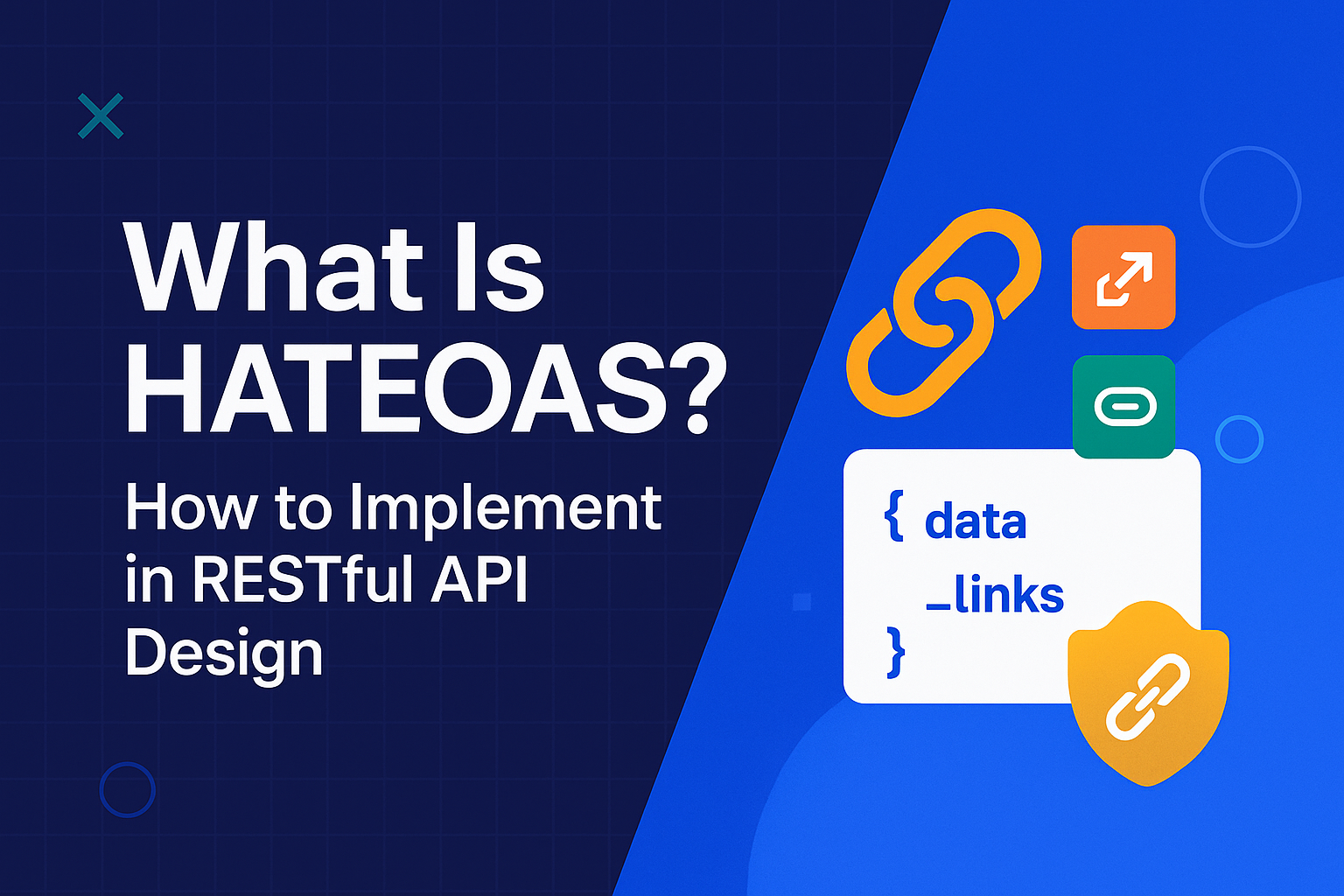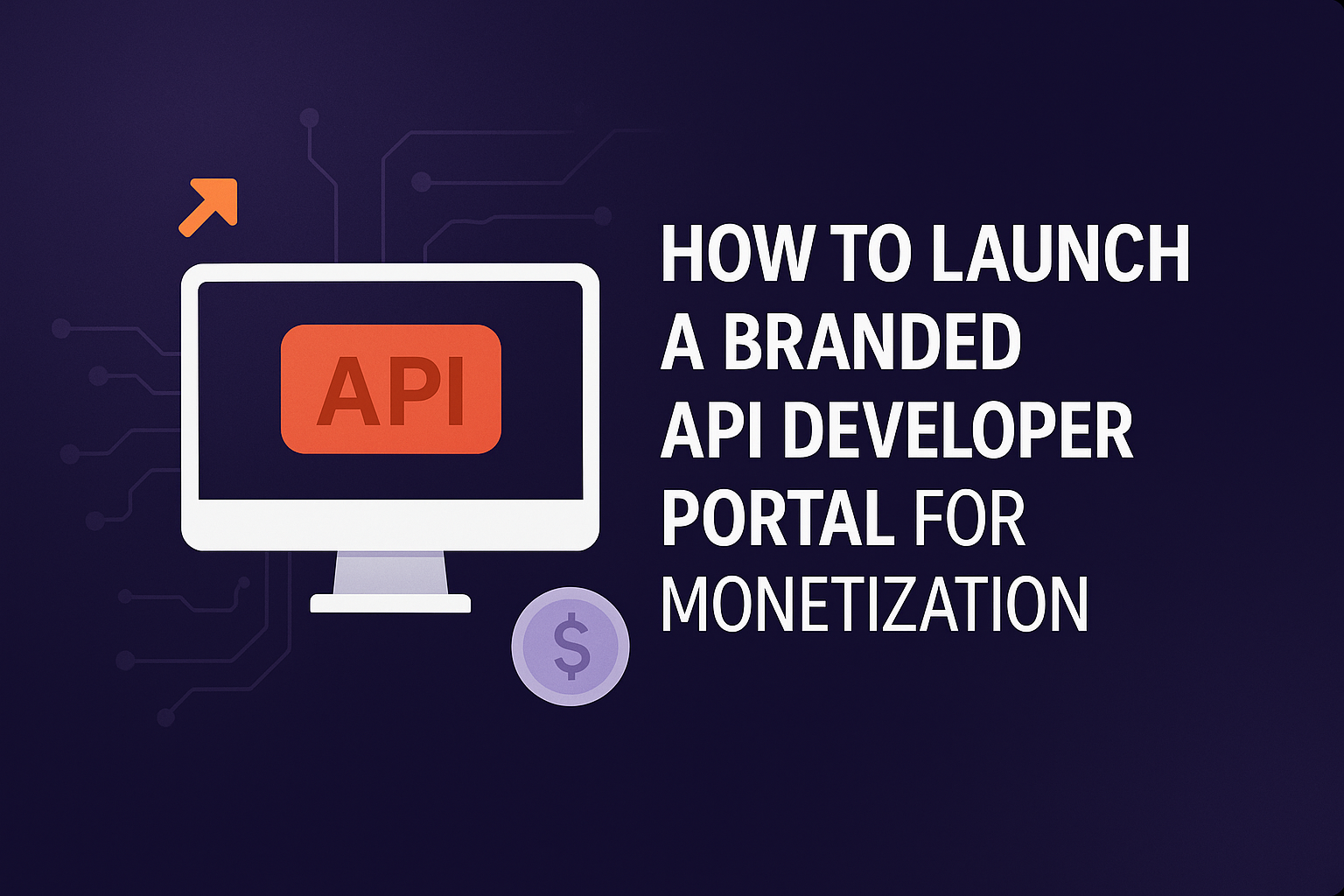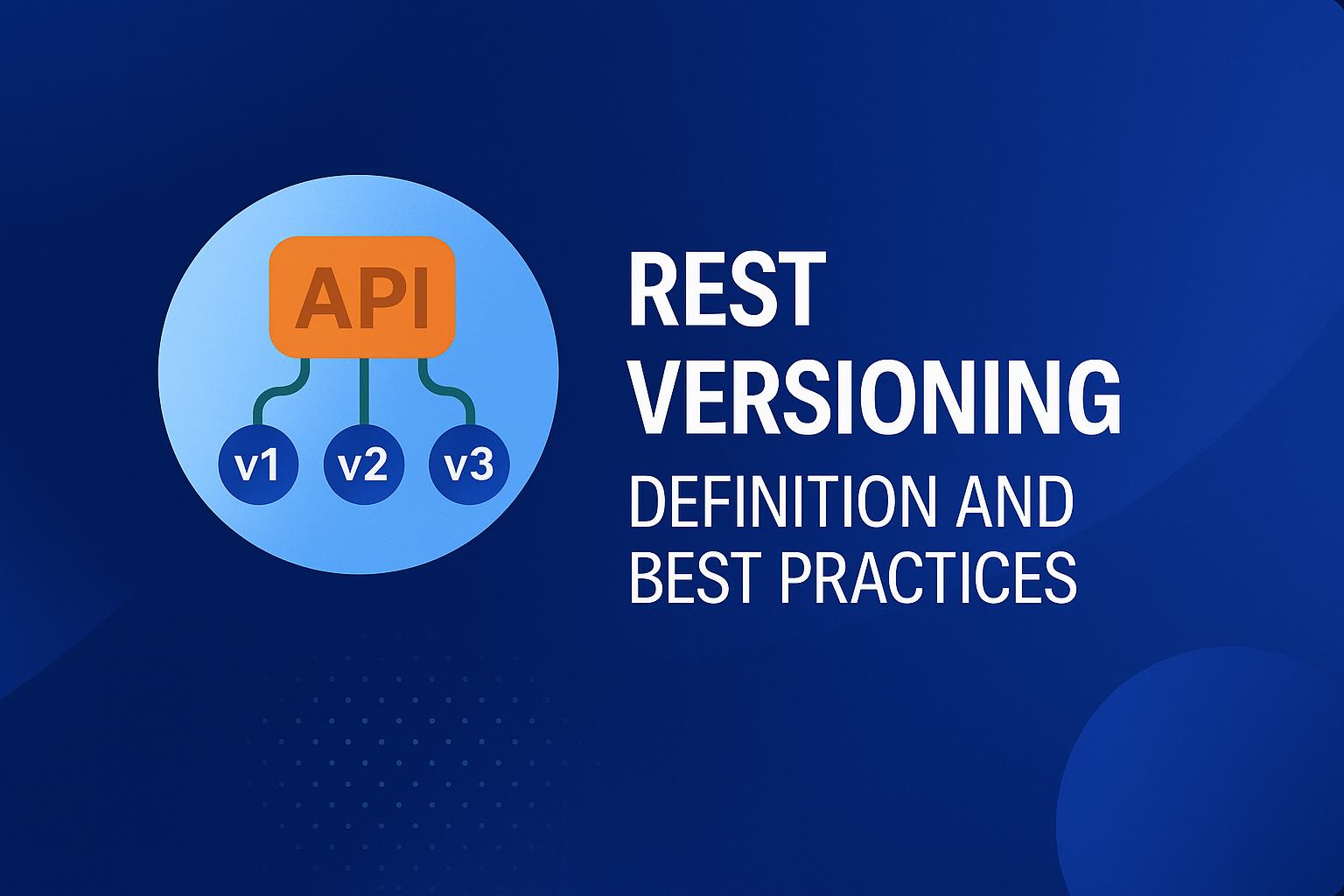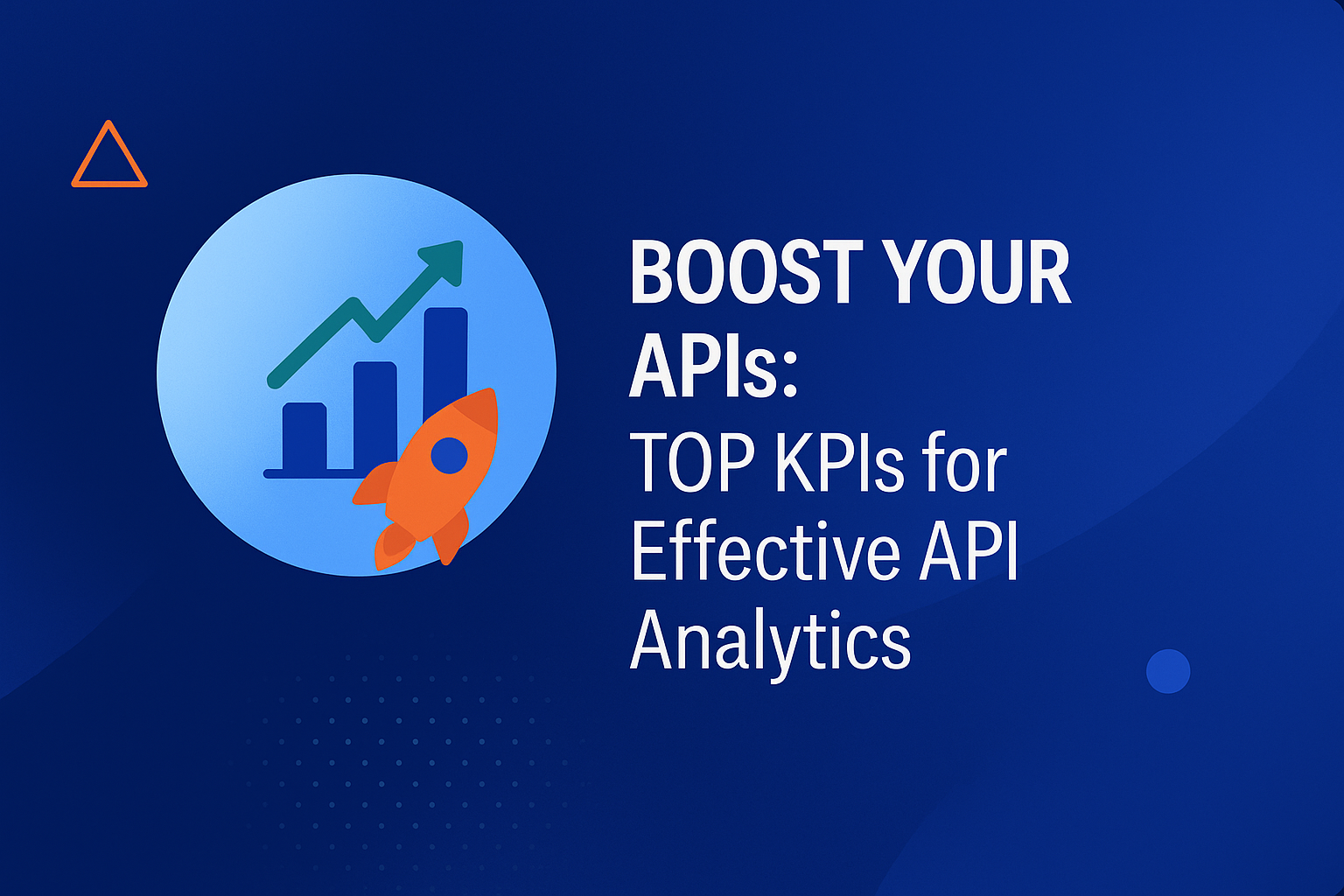
REST APIs are the backbone of modern software systems, but many implementations struggle with adaptability. Static endpoints work until changes break client integrations or leave documentation outdated. That is where a REST maturity model such as HATEOAS (Hypermedia as the Engine of Application State) helps define direction.
HATEOAS supports Level 3 REST maturity by embedding navigation into each response. Instead of relying on assumptions or external charts, clients receive actionable links. The server guides what is valid at each state, reducing ambiguity and improving control.
For system architects, platform engineers, and integration leads, this shift has strategic impact. It reduces version churn, decouples frontends, and supports long-lived workflows.Instead of relying on developer memory or static contracts, structure is enforced through design.
This article explores how HATEOAS functions within REST, its role in maturity-driven design, and how teams apply it in practice.
Key takeaways
- HATEOAS reduces version-specific API logic by centralising valid transitions at runtime.
- QA coverage expands by tracking embedded links across 100% of response states.
- Frontend change frequency drops when servers guide next actions through hypermedia controls.
- Response-based navigation enables client reuse across at least three deployment environments.
- Teams cut re-integration time by 20–30% when clients follow embedded transition flows.
What is HATEOAS in REST APIs?
HATEOAS, or Hypermedia as the Engine of Application State, refers to a REST constraint where servers include navigable links in responses. It enables clients to interact dynamically by following these links without hardcoding endpoint logic.
HATEOAS structures each API response to include valid, context-specific transitions. Instead of static documentation, clients use embedded links to determine next steps, reducing manual coordination between teams.
How does HATEOAS improve REST APIs?
REST APIs often struggle with brittle integration logic, disconnected clients, and documentation-heavy flows. HATEOAS restructures this by embedding navigational paths directly into the response. It simplifies transitions, reduces coupling, and supports scalable evolution.
Here’s how HATEOAS improves REST APIs across structure, control, and client adaptability:
Enhances discoverability and navigation
Clients no longer need to interpret static docs or reverse-engineer endpoint flows. HATEOAS places valid actions in the response itself, reflecting live system state. That clarity improves integration handoff, especially for third-party consumers with limited backend access or no visibility into release cycles.
Supports loose coupling and evolvability
HATEOAS decouples client logic by pushing transition decisions to the server. Each response provides state-specific actions, reducing client‑side endpoint assumptions. This structure helps frontend and integration teams adapt without contract friction.
Strengthens state management and workflow control
HATEOAS reflects state directly in the resource response, not in hidden logic. Each action link is tied to what the system currently allows, based on rules already enforced on the backend. It reduces client-side misfires and supports clearer workflows across environments where APIs must guide rather than merely serve data. Especially useful in approval flows, it ensures clients follow valid, sequential transitions.
Improves testability and QA consistency
Without visible transitions, QA teams build test cases from guesswork and docs. Hypermedia responses make those transitions concrete, letting automation track link presence and behaviour. Many teams report faster regression cycles after validating state changes directly through structured responses.
Enables client-side resilience and reusability
Clients often break during backend rollouts because they rely on fixed endpoint maps. HATEOAS lets interfaces respond to runtime logic instead of predefined paths. That flexibility makes it easier to reuse UI logic across web, mobile, and admin panels without platform rewrites.
Core components of HATEOAS
HATEOAS relies on a defined set of components to handle navigation, action flow, and representation. These parts allow the server to guide the client at runtime, without relying on static rules or external documentation.
Below are the core components that support HATEOAS in REST APIs:
Resources
Resources define what the API exposes, but clients never map these manually. They don’t store URLs or guess endpoints, the server hands them over when needed. Each resource might appear in different formats depending on what the client asked for, but the link to it always comes from the server.
Hypermedia controls
Links in the response tell the client what can happen next. They’re not just navigation, they define allowed transitions based on the current state. Some APIs include templates too, showing what fields the client needs to send if it wants to update or create something.
Media types
Media types tell the client what kind of structure to expect in the response. They do more than define format, they help describe how hypermedia is organised. Some types, like application/vnd.collection+json, signal that links, actions, or templates will follow a standard pattern inside the payload.
Statelessness
Each request must be complete on its own, with no stored session or memory involved. That’s where hypermedia becomes essential, it carries context with every response. Links and actions show the client what is valid in that moment, without relying on earlier requests or hidden state.
How to implement HATEOAS in RESTful APIs?
Getting HATEOAS right means designing more than just responses. It shifts how the entire API behaves; what the client sees, what it can do, and when. That kind of structure takes planning up front, not patching later.
The steps below outline what a full HATEOAS implementation should account for:
Defining resource identifiers (URIs)
Even though clients discover links at runtime, the server still needs structure behind them. Consistent URIs make debugging easier, reduce onboarding friction, and help teams reason through the system. If the format changes later, internal tools and log traces should still make sense without digging through spec history.
Selecting media types
Hypermedia needs structure the client can understand. That’s where media types come in, they tell the client how to parse what’s inside. Formats like application/hal+json or vnd.collection+json standardise how links, actions, and templates appear. Pick one that fits your use case, and make sure it leaves no guesswork in how navigation works.
Embedding navigational links
Hypermedia only works when responses show the next valid actions, right inside the payload. That’s where links come in. They help the client move forward without relying on documentation or storing route logic. Each link represents an available transition based on the current state. If something’s no longer valid, like a delete action, it disappears from the response entirely.
For example, a user resource might include links to itself and to related data:
{
"userId": "12345",
"name": "John Doe",
"links": [
{ "rel": "self", "href": "/users/12345" },
{ "rel": "posts", "href": "/users/12345/posts" }
]
}
Extending hypermedia controls
Links are a good start, but some actions need more structure. When a client needs to create or update something, it helps to include a form template right in the response. That form shows which fields are required, what format to use, and where to send the request. It removes guesswork and shortens the time between discovery and execution.
Managing state transitions
What the client sees should depend on where the resource is in its lifecycle. If a payment is already completed, the response shouldn't offer a refund link unless that action is valid. HATEOAS handles this by showing or hiding links based on current state, so every transition is intentional and guided directly by the server.
Versioning without breakage
Even with hypermedia in place, versioning still matters. Just avoid pushing clients into a full rewrite when a change rolls out. You can include version info in media types or paths, but the navigation logic should stay intact. If the links still work, the client doesn’t care what’s changed behind them.
Examples of HATEOAS responses
HATEOAS responses return data along with guidance for what the client can do next. Links and embedded controls represent available actions based on current resource state. They give direction without relying on static paths or external documentation.
The following examples show how that logic appears in actual responses:
User resource with action links
This response returns the user data along with two links. One points to the user’s own resource, and the other leads to related posts. These links appear based on what the server allows at that point. If an action isn’t valid, the server leaves it out of the response.
{
"userId": "12345",
"name": "John Doe",
"_links": {
"self": { "href": "/users/12345" },
"posts": { "href": "/users/12345/posts" }
}
}
Bank account with state-based actions
Every link in this response represents something the account is allowed to do right now. If withdrawal isn’t possible, that option stays out. The server decides what gets included based on state rules, so the client never has to track those conditions on its own.
{
"accountId": "ACC789",
"balance": 500.00,
"_links": {
"self": { "href": "/accounts/ACC789" },
"withdraw": { "href": "/accounts/ACC789/withdraw" },
"deposit": { "href": "/accounts/ACC789/deposit" },
"close": { "href": "/accounts/ACC789/close" }
}
}
embedded resources in HAL format
Some responses include related data directly inside the payload. This one returns a list of departments and embeds each department’s own link and details. The _embedded block keeps everything in one place, so the client doesn’t need to make extra calls just to load basic associations.
{
"_embedded": {
"departments": [
{
"name": "Engineering",
"_links": {
"self": { "href": "/departments/eng" }
}
},
{
"name": "HR",
"_links": {
"self": { "href": "/departments/hr" }
}
}
]
}
}
Minimal greeting resource
This example shows the bare minimum needed for a hypermedia-aware response. It returns a greeting message along with a link back to itself. In small APIs or test setups, this format helps teams validate hypermedia handling without layering in business logic.
{
"message": "Welcome!",
"_links": {
"self": { "href": "/greeting" }
}
}
Extended patterns in HATEOAS that support RESTful APIs
HATEOAS can be extended using patterns that support richer interactions, clearer transitions, and dynamic inputs. These formats add structure around links, forms, and relationships without breaking REST principles.
The following patterns help HATEOAS scale in real-world API designs:
HAL-Forms
HAL-Forms builds on HAL by adding templates that describe input fields for actions like create or update. These templates define method type, target URL, and required fields, all embedded in the response. It helps the client handle form-based actions without guessing what data to send or where to send it.
Collection+JSON
This format focuses on working with resource collections. It defines links, items, and a template for submitting new data. Clients can discover available operations and field structures in the response itself. It’s useful for listing records, creating entries, and navigating grouped resources with minimal setup.
Siren
Siren represents entities along with actions and links in a single, structured response. Each action includes fields, method type, and target URI, allowing the client to perform operations without external instructions. It works well for APIs that expose nested resources or support complex flows.
JSON:API
JSON:API standardises how resources, relationships, and metadata are represented. It supports links for both primary and related data, giving clients a consistent way to navigate and interact. While not strictly HATEOAS-first, it includes enough hypermedia support to guide runtime decisions in well-structured APIs.
Hydra
Hydra uses JSON-LD to add meaning and structure to hypermedia responses. It defines classes, operations, and vocabularies that help clients understand available actions without hardcoding logic. This pattern supports smart client generation and works well in linked data environments where semantics matter.
RFC 5988 Web Linking
This pattern moves hypermedia links into HTTP headers instead of the response body. It supports attributes like rel, type, and hreflang, making navigation lightweight and standardised. It’s often used for pagination, resource discovery, or linking related content without altering the main payload.
Build flexible hypermedia-driven APIs with Digital API
Designing hypermedia-driven APIs takes more than links, it requires consistency, adaptability, and state awareness at every layer. From URI structure to embedded controls, every decision shapes how the client interacts and responds. Teams need tools that simplify this complexity without lowering the quality of implementation.
DigitalAPI helps define, structure, and validate HATEOAS-based responses through a model-driven interface. It supports hypermedia controls, response behavior, version handling, and testing. That foundation helps teams reach full REST maturity faster and with less manual effort.
Frequently Asked Questions (FAQs)
1. What are the benefits of hypermedia-driven APIs?
The benefit of hypermedia-driven APIs is that they guide clients using links embedded in each response. This reduces reliance on documentation and avoids hardcoded routing. It also supports cleaner state transitions across changing resource conditions.
2. Is HATEOAS necessary for REST compliance?
No, HATEOAS is not required for basic REST compliance but is part of Level 3 in the REST maturity model. It adds navigational structure through embedded links. Most REST APIs function without it, but full maturity includes hypermedia controls.
3. What tools support HATEOAS implementation?
Tools that support HATEOAS implementation include Spring HATEOAS, Django REST Framework with HAL, and API Platform. These frameworks help generate hypermedia links, define affordances, and structure transitions. They simplify building runtime-driven APIs without manual link handling.
4. How does HATEOAS affect client-server interaction?
HATEOAS affects client-server interaction by shifting control over transitions to the server. The client reads available actions from links in the response instead of storing logic. It reduces coupling and allows the client to follow the current state safely.
5. What is the difference between REST and HATEOAS?
The difference between REST and HATEOAS is that REST defines the architectural style, while HATEOAS is a constraint within it. HATEOAS adds hypermedia controls to guide client interactions. It enables state-based navigation inside standard REST responses.
6. Do modern clients use HATEOAS?
Yes, modern clients use HATEOAS in systems that need dynamic workflows or strict state control. It’s common in enterprise, platform, or linked-data APIs. Many front-end clients skip it when navigation stays simple or routing is handled on the client side.
7. What media formats support HATEOAS?
Media formats that support HATEOAS include HAL, HAL-Forms, Siren, Collection+JSON, and Hydra. These formats structure links, actions, and embedded data in consistent ways. They help the client understand what’s possible without relying on external rules or documentation.
You’ve spent years battling your API problem. Give us 60 minutes to show you the solution.
.svg)

%20(1).png)





